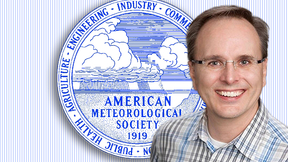Back
Physical and Life Sciences
Center Offers Short Course on Laser-Plasma Interactions
The High Energy Density Science (HEDS) will offer a three-week course during November 2019, which will explore the principles of laser-plasma interactions that are relevant to HED physics, with a focus on unmagnetized plasmas. Pierre Michel, an LLNL expert in plasma physics, will teach the course on-site at LLNL, and his recorded lectures will be available through the HEDS…
Lab's space program is on the rise
Nascent security challenges, novel scientific discoveries and new technology development opportunities are all part of outer space and in the focus of the Lawrence Livermore National Laboratory's (LLNL) Space Science and Security Program (SSSP). The national security community now refers to space as a “warfighting domain.” As such, it is both integral to the U.S. defense…
New class of metal materials is its strong suit
In a perfect world, engineers would like metals to be strong and electrically conducive without any defects. But no metal is perfect. It loses strength due to synthetic defects, causing a softening of the material. Lawrence Livermore National Laboratory (LLNL) scientists and collaborators have created a new class of metal material that keeps its strength and…
Use of nanopores could lead to cleaner water
Not all nanopores are created equal. For starters, their diameters vary between 1 and 10 nanometers (nm). The smallest of these nanopores, called Single Digit Nanopores (SDNs), have diameters of less than 10 nm and only recently have been used in experiments for precision transport measurements. A team of Lawrence Livermore National Laboratory (LLNL) scientists and…
Climate ensembles help to identify detection time of human-caused climate signals
By comparing observations to large ensembles of climate model simulations, scientists can now better isolate when human-caused climate change was first identifiable in observations. Large Initial Condition Ensembles (LEs) are simulations of climate change performed with a single climate model. An LE typically has between 30 and 100 individual “members” in order to probe…
Study on stability of highly energetic materials
Understanding the physical and chemical characteristics of energetic materials under extreme conditions is crucial for their safe and efficient use. High-pressure phase transitions in such materials can cause significant changes in their initiation properties and detonation performance necessitating detailed structural studies. The high-pressure structural evolution of CL…
World's largest optical lens shipped to SLAC
When the world’s newest telescope starts imaging the southern sky in 2023, it will take photos using optical assemblies designed by Lawrence Livermore National Laboratory (LLNL) researchers and built by Lab industrial partners. A key feature of the camera’s optical assemblies for the Large Synoptic Survey Telescope (LSST), under construction in northern Chile, will be its…
More accurate modeling of precipitation’s diurnal cycle
Precipitation is one of the most challenging aspects of climate to model, so the accuracy with which it is represented is therefore frequently cited as a barometer for the quality of climate forecasting. A shortcoming in current climate models is their inability to accurately predict diurnal precipitation patterns. Over land, the daily precipitation cycle is strong: As the…
The Little Neutrino Experiment That Could
Many experiments conducted by Lawrence Livermore researchers are designed to explore questions of fundamental science. Others are intended to test-drive new mission-critical technologies. Perhaps the most exciting experiments are those that undertake both objectives. PROSPECT, the Precision Oscillation and Spectrum Experiment, is a unique neutrino–antineutrino detection…
Going small can help determine where nuclear material came from and how it was made
Until recently, the analysis and identification of nuclear fuel pellets in nuclear forensics investigations have been mainly focused on macroscopic characteristics, such as fuel pellet dimensions, uranium enrichment and other reactor-specific features. But Lawrence Livermore National Laboratory (LLNL) scientists are going a step further by going down to the microscale to…
Freshening up contaminated water
Nitrate is a troublesome groundwater contaminant that is mainly caused by fertilizer runoff on farmlands. Many wells in agricultural regions exceed the EPA limit for nitrate in drinking water, and without an economical treatment option the water is unfit for potable use. But Lawrence Livermore National Laboratory (LLNL) and Stanford University researchers have developed a…
Enhancing fullerene–graphene nanocarbon networks for energy storage and harvesting
Lawrence Livermore researchers and collaborators at the University of Texas at El Paso have developed a concept that allows the integration of the characteristic properties of fullerene in 3D graphene networks. In the study, the team optimized the interaction between 3D graphene networks and fullerenes, specifically in the context of stability and charge transfer in an…
Jupiter shows its true stripes
There’s a reason why Jupiter’s stripes are only skin deep. It turns out that the planet’s zonal winds -- the alternating east-west jet streams seen in photographs as colorful stripes -- only descend to 3,000 kilometers in the atmosphere. Magnetic fields can make fluids that conduct electricity (like Jupiter’s atmosphere) behave more like honey than water. Deeper into the…
Lawrence Livermore climate scientist Karl Taylor elected American Geophysical Union fellow
Lawrence Livermore National Laboratory (LLNL) climate scientist Karl Taylor has been selected as a fellow of the American Geophysical Union (AGU). The AGU, with a membership of more than 60,000, is an international scientific association that spans the major disciplines of earth and space sciences. Each year a tenth of a percent of the members become fellows in recognition…
'Quantum annealer' shows promise in study
An international team of researchers, including Lawrence Livermore National Laboratory (LLNL) physicist Arjun Gambhir, has developed a new algorithm for solving polynomial systems of equations using a type of quantum computer called a "quantum annealer." The team systematically examined how this method scales when facing increasingly difficult mathematical equations, with…
Nerve-Agent Antidote Shows Great Potential
Scientists at LLNL’s Forensic Science Center and Biosecurity Center have formulated molecule LLNL-02, the first molecule capable of dual protection against nerve agents.
Nanowire arrays could improve solar cells
Transparent electrodes are a critical component of solar cells and electronic displays. To collect electricity in a solar cell or inject electricity for a display, you need a conductive contact, like a metal, but you also need to be able to let light in (for solar cells) or out (for displays). Metal is opaque, so the current techniques use metal oxides, most often indium…
Center Collaborates with University of Rochester to Deliver New Graduate Course
The LLNL High Energy Density Science (HEDS) Center is collaborating with the University of Rochester to offer a new graduate course focused on special topics in HED physics, as part of the Center's expanding range of educational opportunities. This course will survey the field of HED Science, extending from ultra-dense matter to the radiation-dominated regime. Topics will…
Klein named American Meteorological fellow
Atmospheric scientist Stephen Klein has been selected as a fellow of the American Meteorological Society. The American Meteorological Society (AMS) is the premier scientific and professional organization in the United States promoting and disseminating information about the atmospheric, oceanic and hydrologic sciences. AMS membership numbers 13,000 and is divided roughly…
Study reveals new structure of gold at extremes
Gold is an extremely important material for high-pressure experiments and is considered the "gold standard" for calculating pressure in static diamond anvil cell experiments. When compressed slowly at room temperature (on the order of seconds to minutes), gold prefers to be the face-centered cubic (fcc) structure at pressures up to three times the center of the Earth…


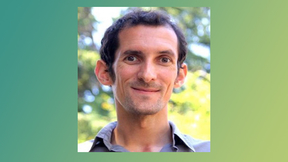


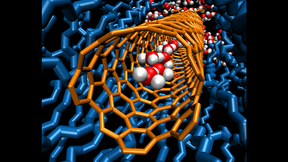



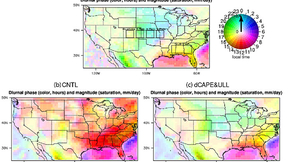
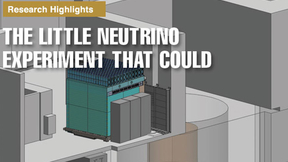


![ACS journal cover of [60]fullerene monoadduct physisorbed on a graphene network](https://contenthub.llnl.gov/sites/contenthub/files/styles/scaled_16_9_ratio_at_288x162/public/2022-02/2019-08-27_applied-materials-cover.jpg?itok=I48wP8px)






